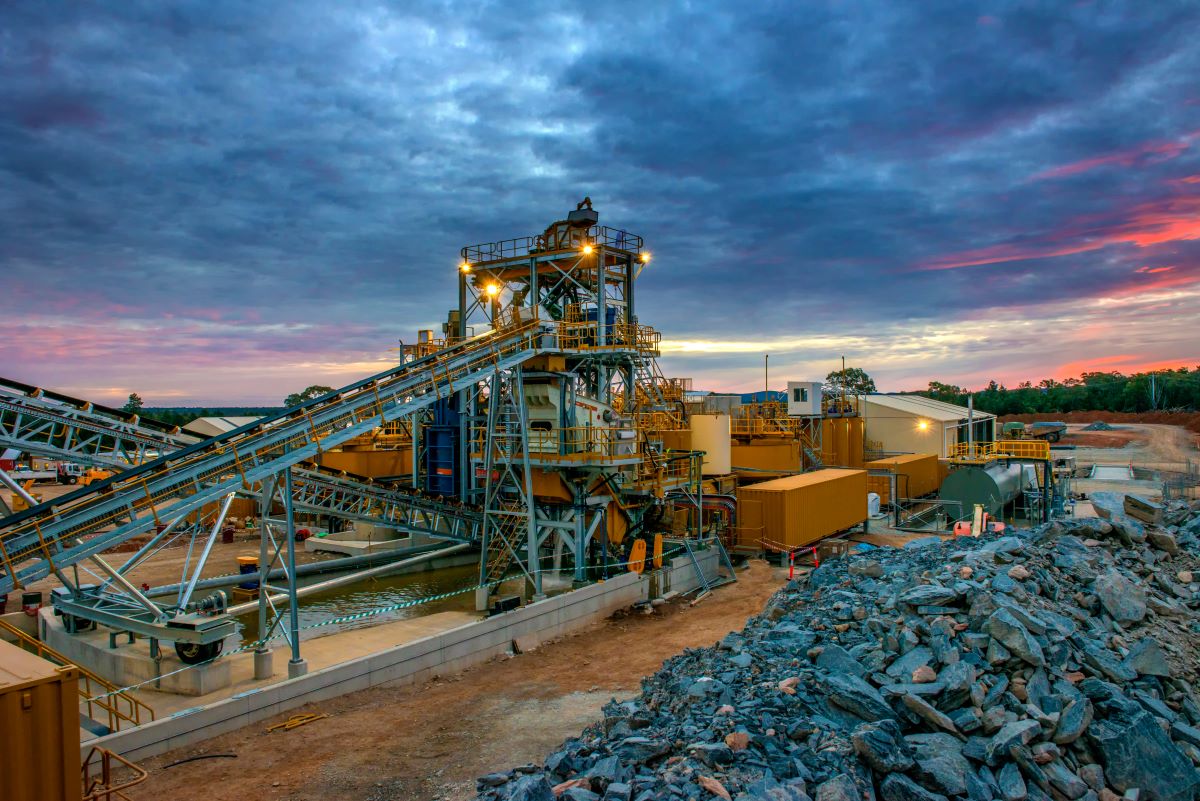As a hotbed of rich natural resources and minerals, Australia has always held its place as a global mining leader. The Australian mining industry is the backbone of its economy due to its large exports of iron ore, coal, lithium, nickel, copper, gold, silver, and several other resources to other parts of the world.
According to the Minerals Council of Australia, the nation’s minerals have contributed 21% to its GDP growth in the last decade and 32% ($41 bn) of all company tax paid in the country in 2022.
As per another report earlier this week, Australian business investment rose to an eight-year high in the September quarter led by a 5.6% increase in the mining sector. The data highlighted that the Australian mining industry raised its expenditure on iron-ore projects and battery-related mineral developments.
Furthermore, the mining sector in Australia is critical to the global clean energy transition initiative. The nation aims to become a key materials supplier to the global EV industry as it has substantial amounts of lithium, copper nickel, and cobalt. Notably, Australia’s lithium production is forecast to rise by more than half from 278,000 tonnes of lithium carbonate equivalent (LCE) in 2021–22 to 438,000 tonnes of LCE in 2023–24, and its exports are likely to double over the next five years.
Why invest in the Australian mining industry?
As per RationalStat, the Australian mining industry is likely to grow at a CAGR of 11% to $53.6 bn during the period between 2023-2030. The country is home to global mining behemoths and investors can gain exposure to the sector based on their strategies.
Here are three stocks that form the backbone of the nation’s mining sector and a major chunk of the Australian Securities Exchange.
BHP Group
BHP Group is a global mining giant headquartered in Melbourne, Victoria. BHP is one of the largest diversified Australian companies whose operations include mining of iron ore, copper, petroleum, coal, gas, nickel as well as diamonds. The company’s operations are not restricted to Australia but span across Europe, China, Japan, and the rest of Asia.
The company saw a 17.3% year-on-year decrease in its revenue, reaching AUD 53.8 bn ($35.78 bn) in the fiscal year ended June 2023. During this same timeframe, BHP Group’s operating income came in at AUD 22 bn ($14.63 bn), marking a 33.2% decline over the same period last year.
The miner is investing strategically through exploration and early-stage copper and nickel to capitalise on future growth prospects. While BHP’s Vice President, Market Analysis & Economics, Huw McKay admitted there was a “multi–year period of adjustment“, he is upbeat about the company’s longterm prospects. “Population growth, urbanisation, the infrastructure of decarbonisation and rising living standards are expected to drive demand for steel, non–ferrous metals, and fertilisers for decades to come.”
Stocks of BHP Group are listed on the Australian Securities Exchange (BHP.AX) and the New York Stock Exchange (NYSE: BHP). The stock is also listed on the London Stock Exchange as (BHP.L). The company has a market cap of AUD 238.73 bn ($158.75 bn). Since last year, the company’s shares have climbed by 3.2%, over the past 5 years, it has surged 51.19%. Along with that, BHP Group has a PE ratio of 10.82 and a price-to-book ratio of 3.61.
Rio Tinto
Founded in 1873, Rio Tinto is a British-Australian company, which is also the second-largest mining company in terms of market capitalisation. Rio focuses extensively on iron ore assets, but it also mines metals such as aluminium, and copper besides also mining diamonds.
In a recent development, Rio Tinto has approved a new 12.4MW solar farm and 8.8MVa/2.1MWh of battery storage to generate renewable energy for the Amrun bauxite operations near Queensland. This project is a part of the company’s global decarbonisation strategy and continued efforts to control emissions at its Pacific operations.
Rio Tinto witnessed a 12.5% year-on-year decline in its revenue, reaching AUD 63.50 bn ($42.23 bn) in the fiscal year ended December 2022. During this same period, Rio Tinto’s operating profit dropped by 33.9% year-on-year to AUD 55.6 bn ($36.97 bn). The company experienced cost escalations because of Covid-19, as well as the commodity cycle and broad-based market inflation. During the timeframe, Rio Tinto also increased its exploration and evaluation expenditure by 24%, with a focus on iron ore and lithium projects.
The company’s stocks are listed on the Australian Securities Exchange (RIO.AX), the New York Stock Exchange (NYSE: RIO) and on the London Stock Exchange as (RIO.L). Rio Tinto has a market capitalisation of AUD 205.906 bn ($136.92 bn). The company’s stock has climbed by 7.67% in the past year. It has a PE ratio of 11.15 and a price-to-book ratio of 2.60.
Fortescue
Located in Perth, Fortescue undertakes the exploration, planning, mining, transportation, and marketing of iron ore. Most of its mining assets are in Pilbara, Western Australia. Besides Australia, Fortescue also has mining assets in Argentina, Brazil, Chile, and Kazakhstan.
Unlike BHP and Rio Tinto, which are diversified miners, Fortescue solely focuses on iron ore mining.
For the fiscal year ended June 2023, Fortescue saw a year-on-year revenue decrease of 3.1% to AUD 16.8 bn ($11.17 bn). Additionally, the company’s operating income for the year dropped by 12.3% on an annual basis to AUD 7.9 bn ($5.25 bn). During the period, Fortescue clocked in iron ore shipments of 192 million tonnes, the highest in the company’s twenty-year history.
Fortescue has a market cap of AUD 77.867 bn ($51.78 bn) and is traded on the Australian Securities Exchange (FMG.AX). The company’s shares climbed 28.05% since last year. It has a PE ratio of 10.76 and a price-to-book ratio of 2.85.
Editor’s note: All stock movement figures as of December 4, 2023.










 Australia
Australia China
China India
India Indonesia
Indonesia Japan
Japan Malaysia
Malaysia Philippines
Philippines Singapore
Singapore South Korea
South Korea Taiwan
Taiwan Thailand
Thailand Vietnam
Vietnam Germany
Germany Hong Kong
Hong Kong USA
USA Switzerland
Switzerland Singapore
Singapore
 United Kingdom
United Kingdom








